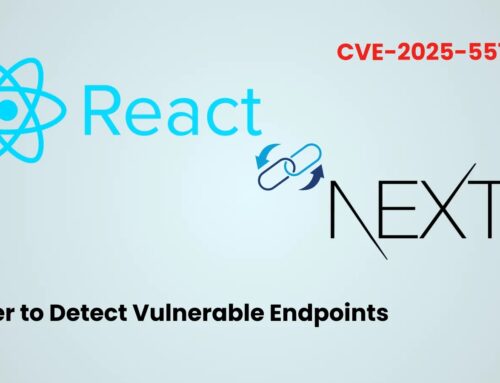
Hackers Actively Exploiting Cisco and Citrix 0-Days in the Wild to Deploy Webshell
The digital landscape is under constant siege, and a recent development sends a stark warning across all sectors: advanced threat actors are actively exploiting zero-day vulnerabilities in critical Cisco and Citrix infrastructure. This isn’t a hypothetical threat; it’s a real-world campaign deploying sophisticated webshells, granting attackers deep, persistent access to corporate networks. For organizations relying on these systems for identity management and remote access, understanding this threat and acting decisively is not merely advisable – it’s imperative for survival.
Advanced Hackers Target Cisco and Citrix Zero-Days
Recent intelligence confirms that a sophisticated hacking group has launched live attacks against unpatched vulnerabilities in two cornerstone enterprise technologies: Cisco Identity Services Engine (ISE) and Citrix systems. These aren’t just any systems; Cisco ISE is a crucial component for network access control (NAC), managing user authentication and authorization, while Citrix solutions often provide vital virtual desktop infrastructure (VDI) and application delivery. Compromising these systems offers attackers a golden key to an entire network.
The attackers’ modus operandi involves exploiting these zero-day flaws to deploy custom-built webshells. A webshell is a malicious script or program uploaded to a web server, enabling remote administration of the server through a web browser. Once established, these webshells provide a persistent backdoor, allowing attackers to execute commands, escalate privileges, move laterally within the network, exfiltrate sensitive data, and maintain stealthy control over compromised systems.
The Critical Role of Network Access Control and Remote Access
The choice of Cisco ISE and Citrix as targets is strategic for attackers. Cisco ISE, a robust NAC solution, acts as the gatekeeper for network access. By exploiting a zero-day in ISE, attackers could potentially:
- Bypass authentication mechanisms.
- Gain unauthorized access to internal network segments.
- Manipulate user policies and network controls.
Similarly, Citrix products, often used for remote access and virtualized environments, offer a direct conduit into an organization’s core infrastructure. A compromise here could lead to:
- Full control over virtualized desktops and applications.
- Access to sensitive data residing within the virtualized environment.
- A trusted launchpad for further internal network penetration.
The nature of these attacks underscores a critical shift in adversary tactics, focusing on high-value targets that provide broad control and persistent access, rather than isolated endpoints.
Remediation Actions and Proactive Defense
Given the active exploitation of these zero-day vulnerabilities, immediate action is paramount for any organization using Cisco ISE or Citrix products. While specific CVEs for these zero-days may not yet be publicly disclosed, or patches released, a proactive defensive posture is essential.
- Monitor Vendor Advisories: Continuously check official Cisco Product Security Incident Response Team (PSIRT) https://sec.cloudapps.cisco.com/security/center/psirt.x and Citrix security bulletins https://support.citrix.com/securitybulletins for updates, new CVEs, and patch availability. Apply patches immediately upon release.
- Implement Network Segmentation: Isolate critical systems, including Cisco ISE and Citrix infrastructure, into separate network segments with strict access controls. This can limit lateral movement if a compromise occurs.
- Strong Authentication and Endpoint Security: Enforce multi-factor authentication (MFA) across all systems, especially those exposed to the internet. Ensure endpoint detection and response (EDR) solutions are deployed and actively monitoring all endpoints.
- Webshell Detection and Prevention: Deploy robust web application firewalls (WAFs) and regularly scan web servers for unknown or suspicious files. Implement file integrity monitoring (FIM) to detect unauthorized changes to web server files.
- Threat Hunting: Proactively search for indicators of compromise (IOCs) on your Cisco ISE and Citrix systems. Look for anomalous network traffic, unusual process executions, or unknown files in critical directories.
- Security Audits and Penetration Testing: Regularly conduct security audits and penetration tests on your network and applications to identify and remediate vulnerabilities before attackers can exploit them.
- Incident Response Plan: Ensure your organization has a well-defined and regularly tested incident response plan specifically for critical infrastructure compromises.
Tools for Detection and Mitigation
Effective defense against sophisticated attacks requires a combination of robust tools and vigilant practices. Below are some categories of tools that can aid in detecting and mitigating the risks associated with these zero-day exploits:
| Tool Name / Category | Purpose | Link (Example) |
|---|---|---|
| Web Application Firewall (WAF) | Protects web applications from various attacks, including webshell uploads and command injection. | https://www.cloudflare.com/waf/ |
| Endpoint Detection and Response (EDR) | Monitors endpoint and network events, detects malicious activity, and provides response capabilities. | https://www.crowdstrike.com/products/endpoint-security/falcon-insight-edr/ |
| Network Intrusion Detection/Prevention System (NIDS/NIPS) | Monitors network traffic for suspicious activity and blocks known attack patterns. | https://www.snort.org/ |
| File Integrity Monitoring (FIM) | Detects unauthorized or suspicious changes to critical system and application files. | https://www.ossec.net/ |
| Vulnerability Scanners | Identifies known vulnerabilities in systems and applications. | https://www.tenable.com/products/nessus |
Conclusion
The active exploitation of zero-day vulnerabilities in Cisco ISE and Citrix systems is a severe and immediate threat. These attacks highlight how adversaries are increasingly targeting foundational infrastructure to establish deep footholds and persistent control. Organizations must prioritize applying vendor patches, implementing strong security controls such as MFA and network segmentation, and maintaining vigilant monitoring. Proactive threat hunting, robust incident response planning, and continuous security audits are not merely best practices; they are essential defenses against the sophisticated threats seeking to exploit critical enterprise systems.





